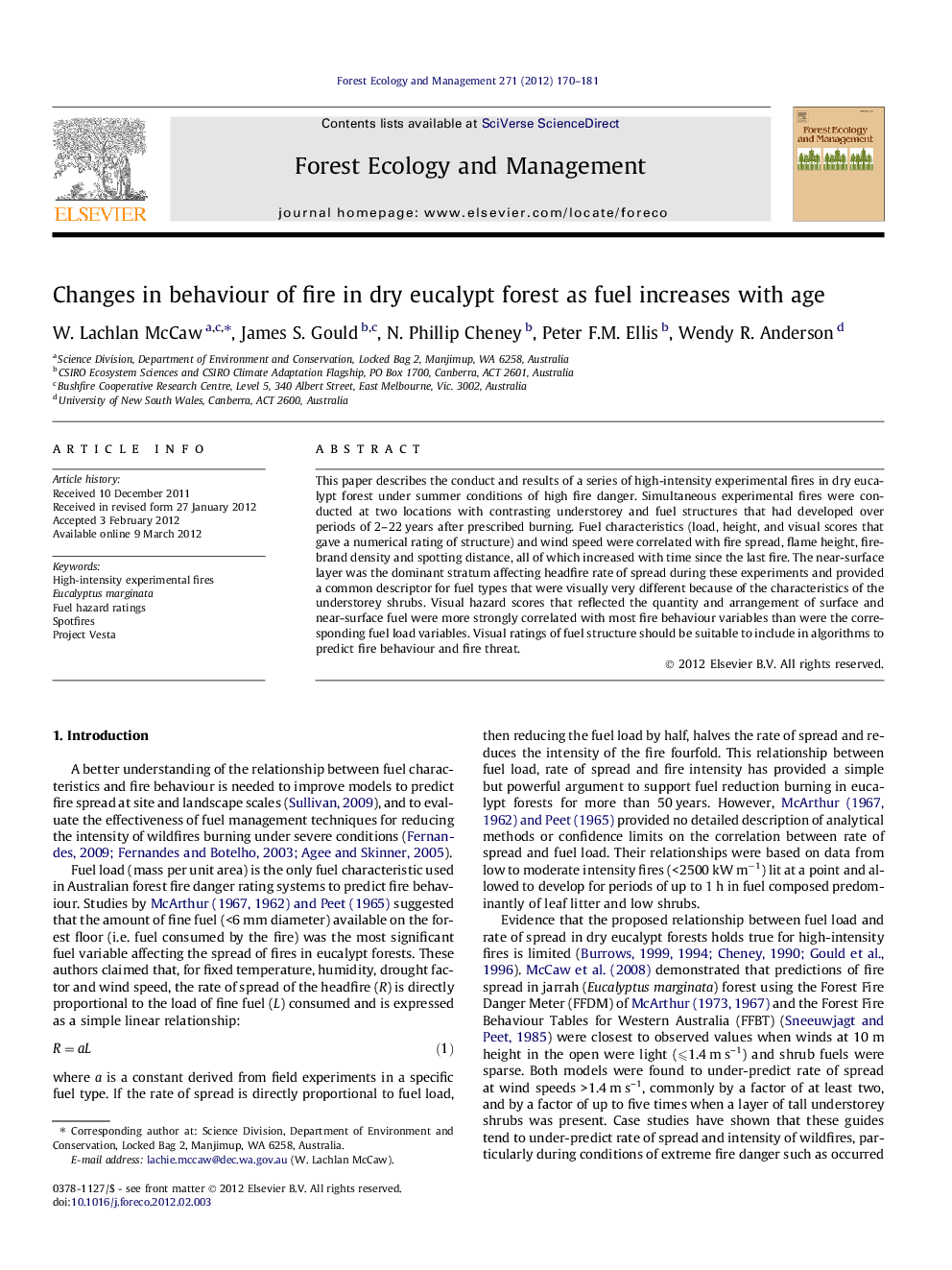| Article ID | Journal | Published Year | Pages | File Type |
|---|---|---|---|---|
| 87411 | Forest Ecology and Management | 2012 | 12 Pages |
This paper describes the conduct and results of a series of high-intensity experimental fires in dry eucalypt forest under summer conditions of high fire danger. Simultaneous experimental fires were conducted at two locations with contrasting understorey and fuel structures that had developed over periods of 2–22 years after prescribed burning. Fuel characteristics (load, height, and visual scores that gave a numerical rating of structure) and wind speed were correlated with fire spread, flame height, firebrand density and spotting distance, all of which increased with time since the last fire. The near-surface layer was the dominant stratum affecting headfire rate of spread during these experiments and provided a common descriptor for fuel types that were visually very different because of the characteristics of the understorey shrubs. Visual hazard scores that reflected the quantity and arrangement of surface and near-surface fuel were more strongly correlated with most fire behaviour variables than were the corresponding fuel load variables. Visual ratings of fuel structure should be suitable to include in algorithms to predict fire behaviour and fire threat.
► High-intensity experimental fires in dry eucalypt forests with different fuel ages. ► Quantify age-related changes of fuel attributes with fire behaviour. ► Numerical values of fuel structure correlated with fire spread, flame height and spotting. ► Study demonstrated that hazard reduction reduces fire behaviour.
